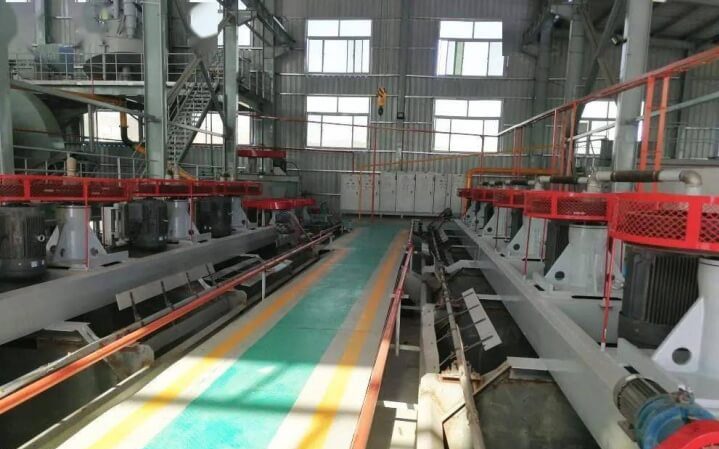Research On Copper-molybdenum Ore Flotation Separation Process

Most copper-molybdenum ores adopt the mixed flotation-copper-molybdenum separation process, because molybdenite and chalcopyrite have similar floatability and serious concomitant, and this process has lower cost and simpler process.
In general, the mixed collectors of flotation machine use xanthate (butyl xanthate), auxiliary collector hydrocarbon oil (kerosene), terpineol oil as foaming agent, lime and water glass as regulators. Ye Lijia conducted an experimental study on a low-grade copper-molybdenum ore in Anhui and found that when kerosene was used as a collector and BK301C was used as an auxiliary collector for copper-molybdenum mixing, the recovery rate of copper and molybdenum could reach 93.3 g/t at a dosage of 59 g/t, respectively. 01% and 73.2%, the effect is much better than other auxiliary collectors.
(1). Pre-processing stage:
Usually, the separation process of copper and molybdenum has two schemes: suppressing molybdenum and floating copper and suppressing copper and floating molybdenum. Since molybdenite is more easily floating, most of them adopt the method of suppressing copper and floating molybdenum. However, when separating high-copper and low-molybdenum ores, the process of suppressing molybdenum and floating copper should be considered, because copper suppression will result in high pharmaceutical costs. In addition, molybdenite has good floatability, and inorganic or organic small-molecule inhibitors are not easy to play, which makes some high-molecular inhibitors such as dextrin, starch, humic acid, tannic acid, etc. to be used.
(2). Inhibition stage:
After pretreatment, copper and molybdenum separation can be carried out. An important aspect is the separation of flotation inhibitors. Commonly used inhibitors can be divided into two categories: inorganic substances and organic substances. Inorganic substances are mainly Knox, cyanide, sodium sulfide, etc., and organic substances are mainly thioglycolate, which can be used alone or mixed.
(3). Concentrate stage:
After the separation of copper and molybdenum, the next step of molybdenum separation and copper separation should be carried out. Generally, molybdenum needs six separations to meet the requirements of smelting. Sometimes part of the molybdenum in the mixed floating concentrate is not completely dissociated, and the regrinding process is inevitable. Copper separation is relatively simple, generally only one separation, but the technology of asynchronous mixed flotation is worth mentioning, that is, flotation of easy-to-float copper first, and then enhanced flotation of difficult-to-float copper (adding mixed xanthate). , mixed two-step copper concentrate, re-grinding and re-separation.



Responses